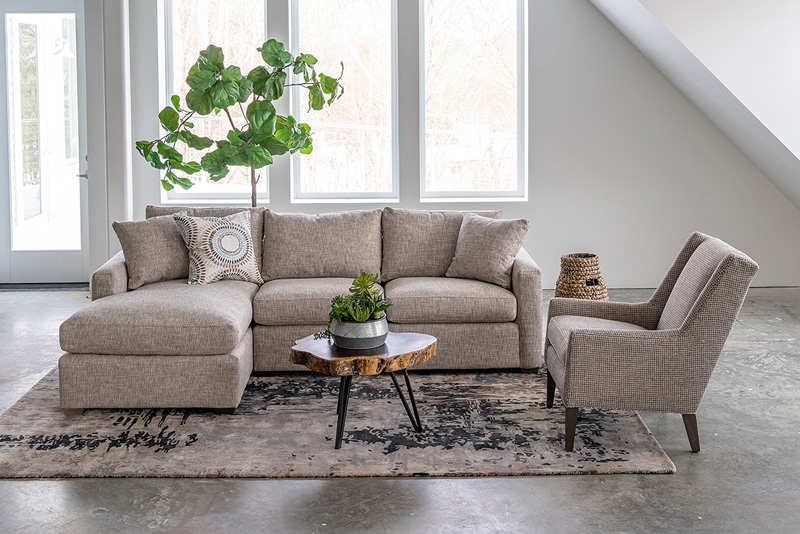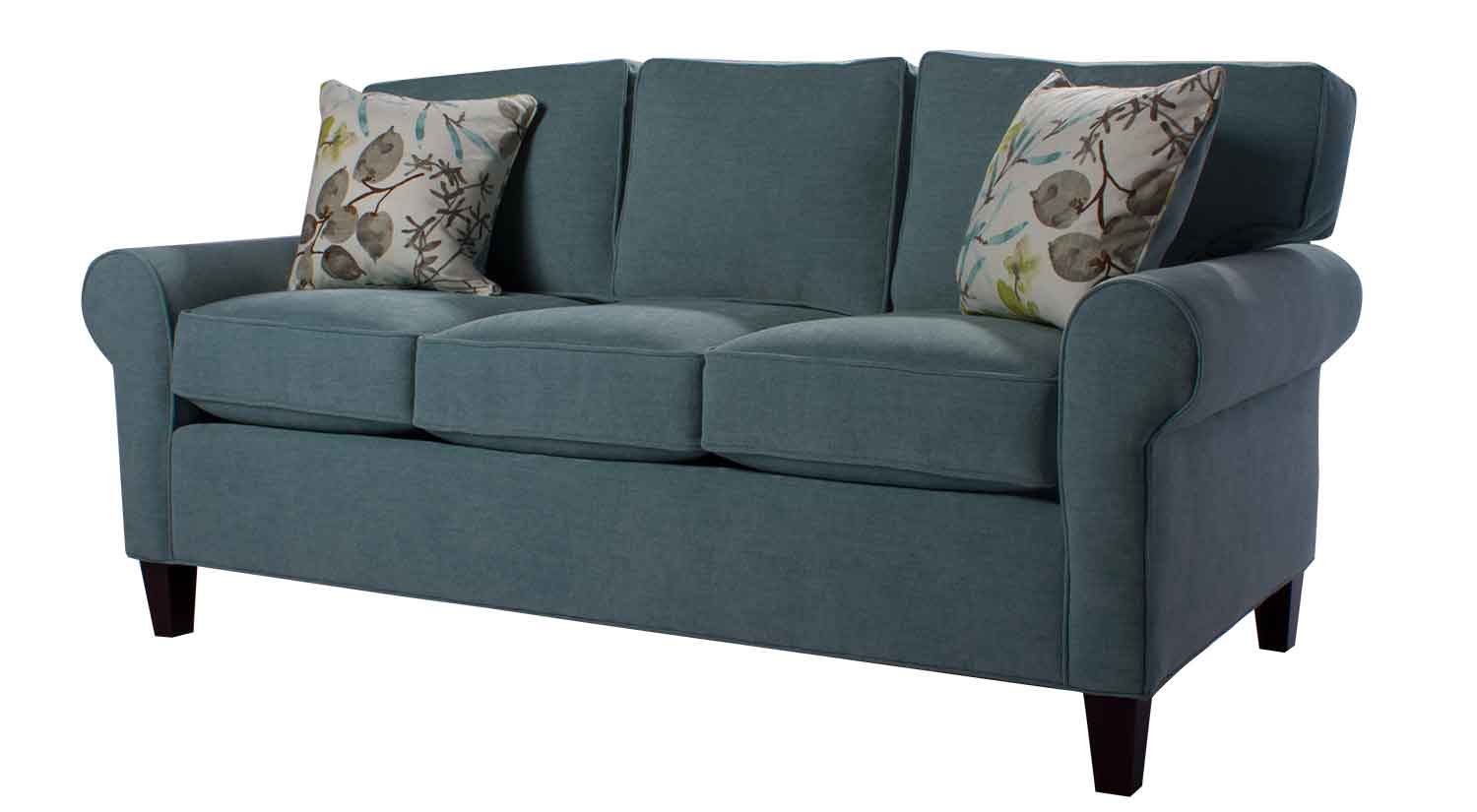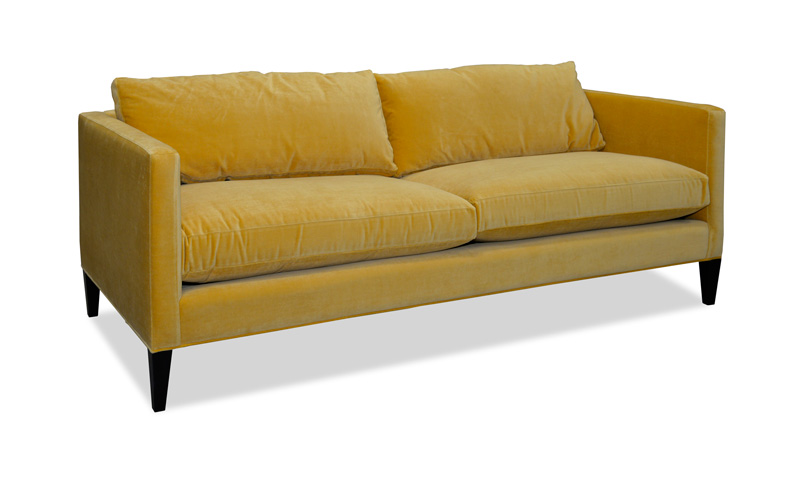25
Aug 2022
When looking into buying a new sofa or a new upholstered accent chair, one topic that must be addressed is the comparison of down vs. foam sofa cushions. Knowing their differences will help you make your best choice.
You’ll see that this decision isn’t necessarily centered around higher quality and higher cost material vs. lower quality and lower priced material. It’s more about preference since the features of each material are different and the quality can be comparable.
We checked in with Catherine Willey, VP of Stores, to talk more about these cushion choices and their various characteristics to learn what sets them apart from each other.
Three common sofa cushion options

There are three common cushion core options we’re going to discuss: down (usually a feather and down combination), foam, or a down and foam combination.
As you’re sofa shopping, ask yourself questions like: Are you sensitive to certain chemicals? Do you like the feel of down, but can’t or don’t want to use actual feathers and down? Are you looking for a greener option? Whatever your answers are, they’ll guide you towards which cushion fill is going to work best for you.
The down low on down
It used to be that down cushions were considered the best available, and they certainly remain to be the most expensive. Now there are quality non- and part-down options, so the idea of what’s “best” is in large part a matter of opinion.
Look and feel
Feather-and-down cushions are soft and cushy, or, as Catherine pointed out, “Down allows you to sit into the cushion.”
The question then becomes, Do you like to sit in or on your sofa? If you enjoy the experience of sinking into your couch, down may be your choice.
As you might imagine, this means that a down cushion will change shape as you use it. And it doesn’t “recover” - that is, down cushions don’t readily return to their original form once you’ve sat in them. This gives down cushion sofas a more casual look, which can feel very welcoming. If you prefer a crisp, clean look, you may want a different option.
To provide consistent shape to a down cushion, some will feature pockets or channels that the down is stuffed into as a way of holding the material in place. This limits how much the down and feathers can bunch up in any one area (in the world of outerwear clothing, this is what gives “puffy jackets” their ribbed appearance).

Additional notes about down
Regardless of the construction of your cushion, if you choose all down, you’ll need to fluff your cushions regularly. This helps redistribute the feathers evenly throughout the cushion and add back the volume or space between the down and feathers that gets smashed out when you sit.
Catherine suggested fluffing your sofa daily, especially if it’s in a high-use area. This not only makes your sofa look more inviting (flattened cushions don’t exactly scream "comfort"), it prolongs the life of the cushions. Poorly maintained down will increasingly lose its capacity to fluff up nicely.
Another consideration with having down cushions is allergies. Be sure that you or anyone else who will use the sofa regularly doesn’t have a sensitivity or allergy to down.
Firm foam foundation
A sweeping comparison of foam vs. down is that they are opposites. Where down is cushy, foam is firm. Where down doesn’t hold its shape or bounce back, foam retains its form and quickly recovers after being compressed. Where down is natural, foam is largely synthetic.
Look and feel
Foam can be manufactured in many ways and quality varies widely. In general, foam is crisp and uniform, providing a cleaner, “buttoned up” appearance.
The feel of a foam cushion tends to be more firm; the kind you sit on instead of sink into. For those who prefer more support, foam is an option to explore.

Additional notes about foam
Some people favor natural materials over those that are human-made. While most foam is made of chemicals, there are some more natural options. Look for soy-based foams, which contain as much as 30% soy - the highest concentration available.
It’s important to remember that not all foam is created equally. Lower quality foam will degrade or compress more quickly than higher quality foam.
The firmness or softness of foam also varies. This isn’t particularly linked to quality; it’s more of a personal preference. The key here is to sit on the cushions you’re considering to make sure they’re comfortable for you.
The foam-plus-down combination: A common favorite
Most people like a little of what down offers and a little of what foam offers, so manufacturers responded by creating cushions that feature the best of both: foam wrapped in down. These types of cushions are the most popular options. The down is held in pockets on the top and bottom of the cushion, so the down and feathers don’t migrate much. As Catherine pointed out, you get the comfort of down without the maintenance.
Look and feel
The qualities of foam cushions wrapped in down are easy to imagine given what’s already been covered here: they feature some of the softness of down with the support and resilience of foam. Additionally, expect them to look slightly rounded and less crisp, but not slouchy.

Additional notes about foam-plus-down
There are two primary ways these combination cushions are constructed: with or without springs. Those with springs are more firm and have a more solid structure.
This is another one of those options where one isn’t necessarily better than the other. Choose whichever is most comfortable for you and your household and best suited to how you’ll use the sofa.
Maintenance for sofa cushions
Whichever type of cushions you choose - whether down, foam, or a combination of the two - be sure to flip and rotate them regularly to help prolong the life, comfort, and appearance of your sofa. This not only benefits the insides of your cushions, but also evens the wear on the upholstery. And as Catherine pointed out, people are habitual and tend to sit in the same spot day after day so rotating your cushions helps to avoid body-contoured slumps.
Find your perfect cushion
New cushion core materials are being created all the time, and many options already exist. If you’re looking for a material that fills a particular need, schedule an appointment with one of our Design Consultants and they’ll be happy to help you find your perfect level of comfort. Or visit one of our furniture showrooms in Massachusetts or New Hampshire to test out your cushion options in person.
